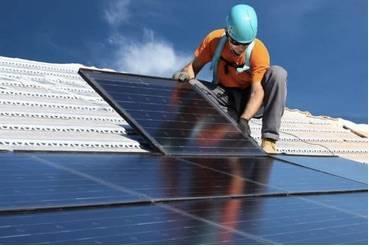Is Making Solar Panels Bad For The Environment

The average lifespan of a solar panel is about 20 years but high temperatures as in the mojave desert can accelerate the aging process for solar cells and snow dust and other natural events tornadoes earthquakes can cause material fatigue on the surface and in the internal electric circuits gradually reducing the panel s power.
Is making solar panels bad for the environment. This reduction in mining requirements has huge benefits for the environment. Like everything in life there are upsides and downsides. You should now have a better understanding of the environmental impacts of solar energy. Let s shine a light on those environmental impacts and determine if the good outweighs the bad when it comes to solar energy and the environment.
However solar panels are not emitting toxins into the atmosphere as they re generating electricity. Additionally to produce solar panels manufacturers need to handle toxic chemicals. Let s start by stating the obvious solar power isn t perfect. Negative environmental impacts solar panels.
However some toxic materials and chemicals are used to make the photovoltaic pv cells that convert sunlight into electricity. Workers install solar panels in california. Solar panels do not require any solid fuel to be able to generate electricity. It produces vast quantities of hazardous waste which are not being adequately dealt with.
Solar energy comes with its own environmental challenges regarding land use water consumption emissions and the use of hazardous materials. While solar panels are considered a form of clean renewable energy the manufacturing process does produce greenhouse gas emissions. Here we will examine the positive and negative environmental impacts of solar panels and what the future has in store for the solar energy industry. At forbes michael shellenberger highlights another problem with solar energy.
They do not require the mining of materials such as coal oil or gas. Although solar energy is a clean alternative to fossil fuels making the panels themselves can have a negative environmental impact. Environmental scientists and solar industry leaders are raising the red flag about used solar panels which contain toxic heavy metals and are considered hazardous waste. The sun provides a tremendous resource for generating clean and sustainable electricity without toxic pollution or global warming emissions.
The potential environmental impacts associated with solar power land use and habitat loss water use and the use of hazardous materials in manufacturing can vary greatly depending on the technology which includes two broad categories. The last few years have seen growing concern over what happens to solar panels at the end of.
















































